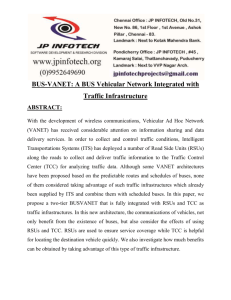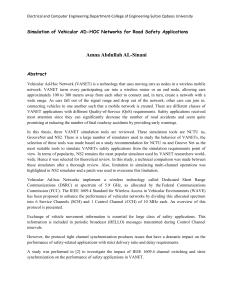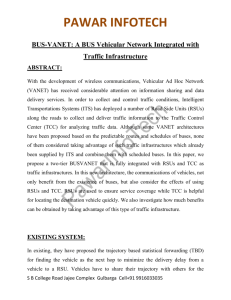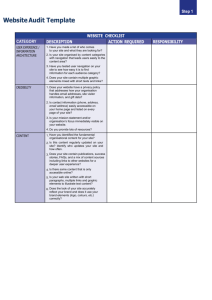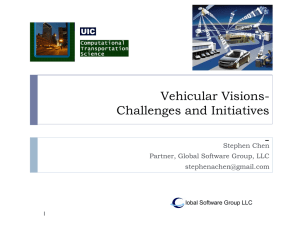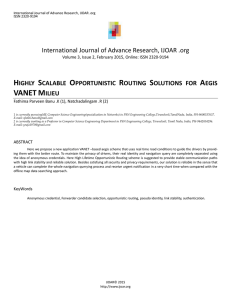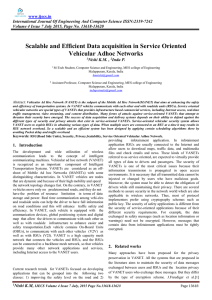VSPN: VANET-Based Secure and Privacy
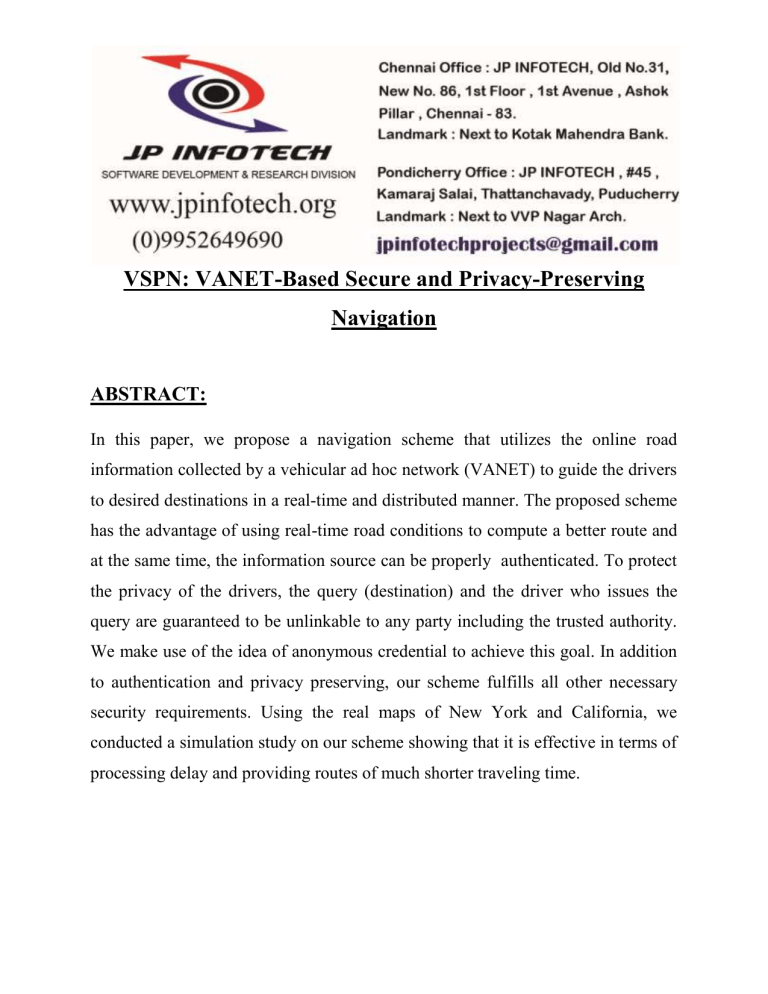
VSPN: VANET-Based Secure and Privacy-Preserving
Navigation
ABSTRACT:
In this paper, we propose a navigation scheme that utilizes the online road information collected by a vehicular ad hoc network (VANET) to guide the drivers to desired destinations in a real-time and distributed manner. The proposed scheme has the advantage of using real-time road conditions to compute a better route and at the same time, the information source can be properly authenticated. To protect the privacy of the drivers, the query (destination) and the driver who issues the query are guaranteed to be unlinkable to any party including the trusted authority.
We make use of the idea of anonymous credential to achieve this goal. In addition to authentication and privacy preserving, our scheme fulfills all other necessary security requirements. Using the real maps of New York and California, we conducted a simulation study on our scheme showing that it is effective in terms of processing delay and providing routes of much shorter traveling time.
EXISTING SYSTEM:
The basic application of a VANET is to allow arbitrary vehicles to broadcast safety messages (e.g., vehicle speed, turning direction, traffic information) to other nearby vehicles (denoted as vehicle-vehicle or V2V communications) and to RSU
(denoted as vehicle-infrastructure or V2I communications) regularly such that other vehicles may adjust their traveling routes and RSUs may inform the traffic control center to adjust traffic lights for avoiding possible traffic congestion. As such, a VANET can also be interpreted as a sensor network because the traffic control center or some other central servers can collect lots of useful information about road conditions from vehicles. It is natural to investigate how to utilize the collected real-time road conditions to provide useful applications.
Communication messages in vehicular ad hoc networks (VANET) can be used to locate and track vehicles. While tracking can be beneficial for vehicle navigation, it can also lead to threats on location privacy of vehicle user. The problem of mitigating unauthorized tracking of vehicles based on their broadcast communications is addressed, to enhance the user location privacy in VANET.
Compared to other mobile networks, VANET exhibits unique characteristics in terms of vehicular mobility constraints, application requirements such as a safety message broadcast period, and vehicular network connectivity.
DISADVANTAGES OF EXISTING SYSTEM:
Driver cannot obtain information like the general fluency of a road from TMC.
PROPOSED SYSTEM:
We propose a new application—VANET based secure and privacy-preserving navigation (VSPN), which makes use of the collected data to provide navigation service to drivers. Based on the destination and the current location of the driver
(the query), the system can automatically search for a route that yields minimum travelling delay in a distributed manner using the online information of the road condition. In addition of driving guidance, the navigation results can also be used for other purposes. One common approach to resolve possible privacy leakage is to use a different authenticable, but unrelated pseudo identity to communicate with a different RSU. Thus, collecting all messages between a vehicle and all RSUs cannot link the messages together to reconstruct the driving routes or analyze the driving habit of a driver. However, to protect the system.
ADVANTAGES OF PROPOSED SYSTEM:
When using the navigation service, a vehicle can be properly authenticated.
Navigation queries and results are protected to preserve user’s confidentiality and operator’s profit.
Information provided by RSUs can be properly authenticated in an efficient way.
Our scheme can lead to a savings of up to 55 percent in travelling time when compared with offline route searching approaches
SYSTEM ARCHITECTURE:
SYSTEM REQUIREMENTS:
HARDWARE REQUIREMENTS:
System
Hard Disk
Floppy Drive
Monitor
Mouse
Ram
: Pentium IV 2.4 GHz.
: 40 GB.
: 1.44 Mb.
: 15 VGA Colour.
: Logitech.
: 512 Mb.
SOFTWARE REQUIREMENTS:
Operating system : Windows XP/7/LINUX.
Implementation : NS2
NS2 Version
Front End
: NS2.2.28
: OTCL (Object Oriented Tool Command
Language)
Tool : Cygwin (To simulate in Windows OS)
REFERENCE:
T.W. Chim, S.M. Yiu, Lucas C.K. Hui, and Victor O.K. Li,“ VSPN: VANET-
Based Secure and Privacy-Preserving Navigation
”, IEEE TRANSACTIONS,
VOL. 63, NO. 2, FEBRUARY 2014.
